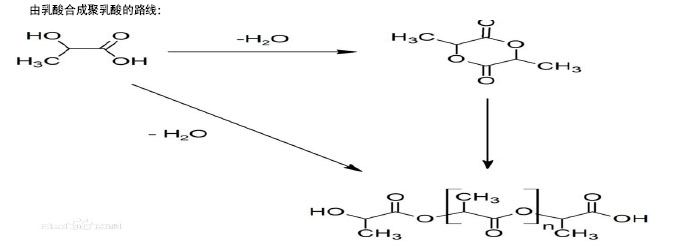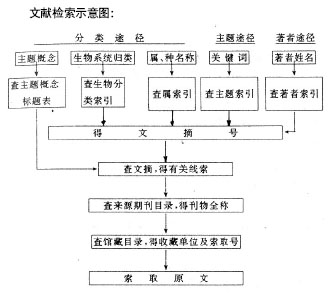| [1] 刘岩,马信龙.人工骨修复材料及金属钛材料在骨组织工程中的应用[J].中国组织工程研究,2012,16(12):2229-2232.
[2] 张志宏,刘志礼,高志增,等.骨修复替代材料修复骨缺损的选择与应用[J].中国组织工程研究,2012,16(52):9836-9843.
[3] 马育林,戴如春,盛志峰,等.骨细胞密度对骨生物力学性能的影响[J].中华老年医学杂志,2009,28(6):500-504.
[4] 辛雷,苏佳灿.人工骨修复材料的现状与展望[J].创伤外科杂志, 2011,13(3):272-284.
[5] 蒋挺大.甲壳素[M].北京:化学工业出版社,2003:1-4.
[6] Kim IY,Seo SJ,Moon HS,et al.Chitosan and its derivatives for tissue engineering applications.Biotechnol Adv.2008;26(1): 1-21.
[7] 徐政,顾其胜,侯春林.实用生物医用材料学[M].上海:上海科学技术出版社,2005:127-128.
[8] VandeVord PJ,Matthew HW,Desiwa SP,et al.Evaluation of the biocompatibility of a chitosan scaffold in mice.J Biomed Mater Res.2002;59(3):585-590.
[9] Aspden TJ,Mason JD,Jones NS,et al.Chitosan as a nasal delivery system:The effect of chitosan solutions on in vitro and in vivo mucociliary transport rates in human turbinates and volunteers.J Pharm Sci.1997;86(4):509-513.
[10] 宋雪莲,于静涛,刘扬,等.壳聚糖在骨组织工程中应用研究进展[J].中国实用口腔科杂志,2013,6(5):306-310.
[11] No HK,Park NY,Lee SH,et al.Antibacterial activity of chitosans and chitosan oligomers with different molecular weights.Int J Food Microbiol.2002;74(1/2):65-72.
[12] Mi FL,Shyu SS,Wu YB,et al.Fabrication and characterization of a sponge-like asymmetric chitosan membrane as a wound dressing.Biomaterials.2001;22(2):165-173.
[13] Monica S,Anna T,Luca S,et al.Collagen based scaffold for biomedical applications.J Biotechnol.2010;150:29.
[14] 佟刚,雷静,钟翠红,等.不同PH与蛋白含量的胶原海绵植入缺损骨组织部位的疗效及安全性考察[J].生物医学工程学杂志,2012, 29(6):1125-1130.
[15] 杨春蓉,王迎军,陈晓峰.纳米羟基磷灰石/胶原/磷酸丝氨酸仿生复合骨组织工程支架材料的制备及表征[J].中国科学杂志,2013, 58(3):267-271.
[16] 李娟,郑闱颖,卢岩,等.骨形成蛋白-2基因修饰的β磷酸三钙/胶原复合材料修复颅骨缺损[J].材料科学与工程学报, 2013,31(2): 248-252.
[17] Pei M,He F,Boyce BM,et al.Repair of full-thickness femoral condyle cartilage defects using allogeneic synovial cell-engineered tissue constructs. Osteoarthritis Cartilage. 2009;17(6):714-722.
[18] Abiraman S,Varma HK,Umashankar PR,et al.Fibrin glue as an osteoinductive protein in a mouse model. Biomaterials. 2002;23(14):3023-3031.
[19] Ornelas L,Padilla L,Di Silvio M,et al.Fibrin glue: an alternative technique for nerve coaptation-Part I. Wave amplitude, conduction velocity, and plantar-length factors.J Reconstr Microsurg.2006;22(2):119-122.
[20] 姚旺祥,马安,朱六龙,等.浓缩自体骨髓复合纤维蛋白胶修复兔桡骨陈旧性骨缺损[J].中国医学科学院学报,2011,33(4):387-392.
[21] 肖裕华,李绍琴,潘文峰,等.纤维蛋白胶复合骨形态发生蛋白与VEGF修复兔桡骨缺损的实验研究[J].实用临床医学, 2013, 14(6): 17-19.
[22] Ignatius AA,Betz O,Augat P,et al.In vivo investigations on composites made of resorb able ceramics and poly( lactide) used as bone substitutes.J Biomed Mater Res. 2001;58(6): 701-709.
[23] Bohner M. Resorbable biomaterials as bone graft substitutes. Mater Today.2010; 13(1):24-30.
[24] Shen L,Yang H,Ying J ,et al. Preparation and mechanical properties of carbon fiber reinforced hydroxyapatite/ polylactide biocomposites.J Mater Sci Mater Med.2009; 20(11):2259-2265.
[25] Matthew R,Eric F,Allan GA,et al.Cell attachment and proliferation on novel polycaprolact on efibres having application in soft tissue engineering.Eur Cells Mater.2002; 4(2):62-63.
[26] 艾合麦提•玉素甫,陈统一,陈中伟,等.可降解聚己内酯修复骨缺损的实验研究[J].中国修复重建外科杂志,2005,19(6):439-442.
[27] 侯喜君,王春华,李 霖,等.β-磷酸三钙煅烧骨修复兔股骨远端骨缺损[J].中国组织工程研究,2013,17(3):400-406.
[28] 杨华清,张明宇,党晓谦,等.复合同种异体成骨细胞的β-磷酸三钙人工骨修复桡骨缺损[J].中国组织工程研究, 2013,17(34): 6061-6066.
[29] 张文志,王潇,段丽群,等.纳米羟基磷灰石/聚酰胺66 复合人工椎体在颈椎病前路椎体次全切除术中的临床应用[J].中国骨与关节损伤杂志,2012,27(9):783-785.
[30] Swetha M,Sahithi K,Moorthi A,et al. Synthesis, characterization, and antimicrobial activity of nano-hydroxyapatite-zinc for bone tissue engineering applications. J Nanosci Nanotechnol.2012;12(1):167-172.
[31] 孟志斌,李德豪,周健强,等.可吸收珊瑚羟基磷灰石与天然珊瑚修复骨缺损的组织学及影像学分析[J].生物骨科材料与临床研究, 2007,4(5):10-15.
[32] 郝思春,蒋建农,周建刚,等.兔骨髓基质干细胞复合珊瑚修复兔骨缺损的实验研究[J].南京医科大学学报,2006,26(9):846-848. |



